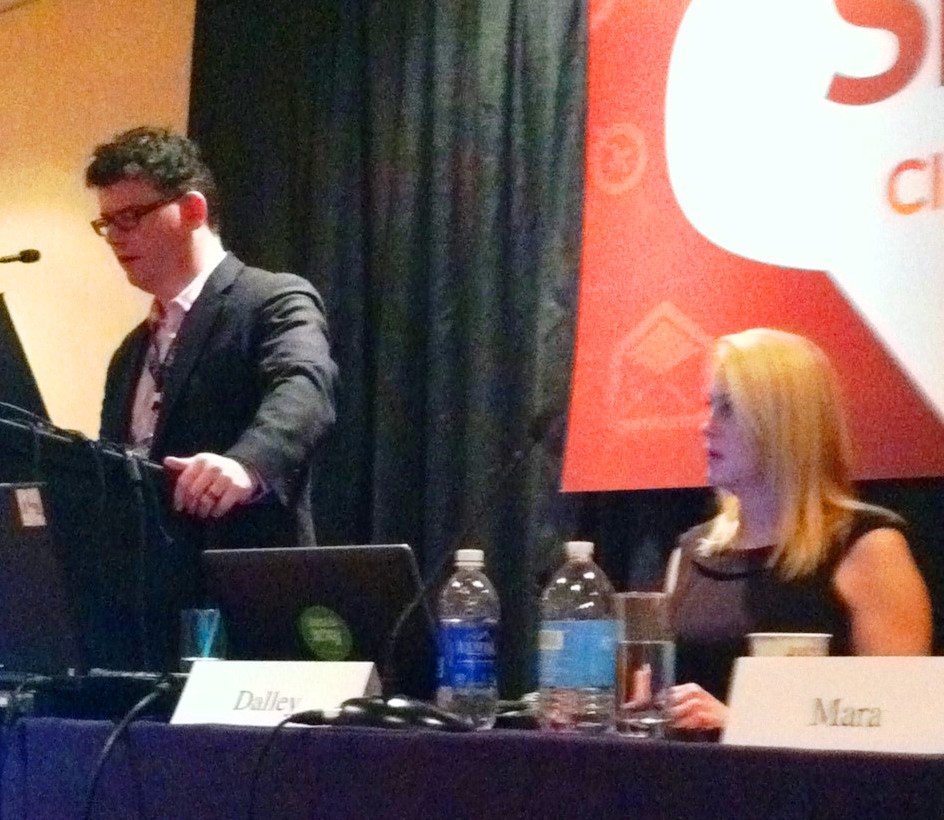“If you don’t remember any other tip for social ROI, remember that you should be listening,” said Tami Dalley as she kicked off the SES New York Session: Social Media Meets ROI.
Social listening often gets put on the back burner, but Dalley, senior director of analytics at Salesforce.com, affirmed that leveraging insights from what audiences are saying is one of the most beneficial practices for a business. She reflected that modern marketers wear many hats – especially as the web constantly presents new outreach channels and monitors additional metrics. The leading reason companies don’t do enough social listening is the overwhelming volume of real-time conversations: It’s impossible for a single human to find the signal in the noise.
It’s impossible for a single human to find the signal in the noise. – Tami Dalley
To start, she recommended businesses invest in technology that can help cull web conversations. Then, she emphasized the importance of building a social strategy that gets every team involved in social listening (and subsequent action). This isn’t a job for marketers alone, and brands need a social marketing plan that accounts for audience response and business action across departments.
What happens when brands fail to listen (and respond) on social media? They run the risk of “shouting from the mountain” instead of living among the people – the same people they rely on to generate revenue. Dalley referenced the recent Lululemon recall of “too-sheer” pants. As fans (or fuming former fans) were tweeting and commenting across the social web about how the pants were see-through, the brand only engaged in positive conversations and ignored responses. The company ultimately looked foolish across its social channels, as customers’ voices overshadowed the seemingly ignorant brand voice on Lululemon’s Pages
“The brand is no longer the marketer, the customers are the marketers,” said Dalley.
“The brand is no longer the marketer, the customers are the marketers.” – Dalley.
She offered insights on how every department can use social listening to better the brand.
Social listening for customer service
The rise of social service makes customer service participation in social marketing almost mainstream.
For those looking to refine their customer service outreach across networks, and for companies just getting started, Dalley advised:
- Identify and solve problems.
- Detect breaking issues and communicate before there’s a crisis.
- Create a knowledge base from Q&A and determine what customer reps must be able to answer and give them resources.
She referenced Dell’s use of social listening to determine the products that generate the greatest share of questions, complaints or other feedback. The company uses this information to build training sessions for customer service reps based on what they’ll need to be able to answer common questions in real time.
Social listening for Marketing/PR
Even as responsibilities in leveraging insights should be shared, marketing departments will likely spearhead social listening initiatives. When it comes to actionable insights, Dalley suggested:
- Uncover conversations around the brand, its products and the industry.
- Respond in real-time to opportunities.
- Leverage topic insights to improve SEO and PPC.
She gave an example of Taylor’s Guitar, which found that “breaks” and “United” starting becoming commonly used words with brand references on social media. A little research showed a customer had posted a video complaining that United Airlines had broken the guitar he checked. Once the brand picked up on the viral topic, they quickly and proactively created a response video to connect with the conversation.
The company succeeded by creating a response with three key ingredients. It was authentic, conveying condolence for the damaged guitar. It educated viewers about the problem (turns out there’s a TSA policy that lets musicians take guitars on planes). It also promoted a brand offering, highlighting that Taylor’s has a repair service. The video got awesome response and boosted customer loyalty.
Social listening for product development
Audiences know what they want, and brands that listen can create offerings they’ll love. Dalley advised product teams monitor:
- Product problems.
- Success of product launches.
- Product input and ideas from customers.
- Real-time focus groups.
- Competition insights.
After announcing it would reduce the alcohol content of Maker’s Mark in response to supply constraint, the brand got a ton of negative backlash. The company reversed the decision on the product end. Simultaneously, the marketing team ran a campaign reading: “You spoke, we listened.” Maker’s Mark responded on social media, put a note on the company website and even ran a PPC campaign with the headline “You Spoke.”
Social listening for sales
Dally recommended that, much like marketing departments, sales teams leverage social listening for proactive outreach and opportunity identification. She suggested sales teams:
- Uncover conversations that indicate intent to purchase.
- Keep an ear out for discontent.
Social listening for HR
Hiring top talent is always a top concern for businesses. An HR department can benefit from social listening through the following strategies:
“Leverage what you learn. Listening without action is like having a gym membership never used.” – Dalley.
- Find where to fish recruits.
- Uncover the experts and influencers and head hunt in their networks.
- Discover the perception of you as an employer.
- Listen to employee issues the brand can resolve.
Ultimately, social listening should be leveraged across the entire organization for a better business. Marketers need to pioneer the social listening movement, and – again – it’s important to have technology to gather the mountains of data, and dedicated teams to analyze what the metrics mean. But every member of a company can have a role in acting on the social insights to fulfill a solid social marketing strategy.
“Leverage what you learn. Listening without action is like a gym membership never used,” said Dalley.




